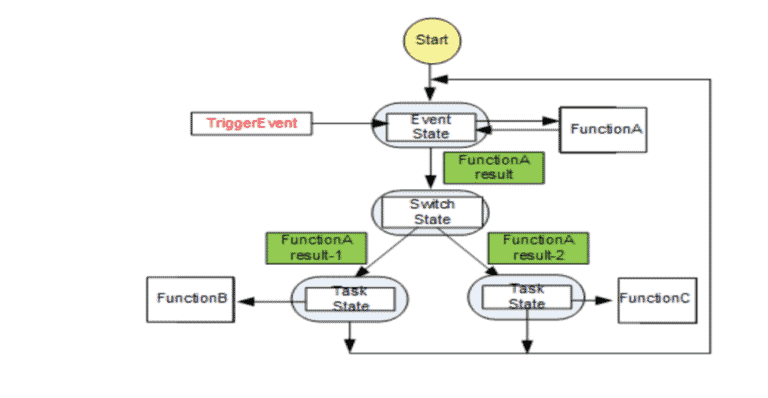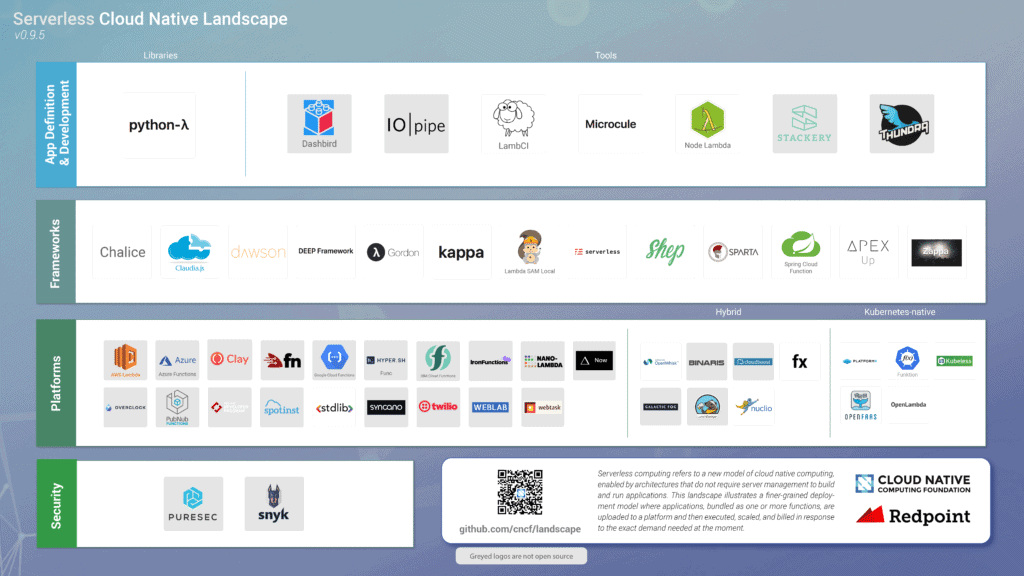By Swapnil Bhartiya
The Cloud Native Computing Foundation (CNCF) Serverless Working Group (WG) has announced a whitepaper and serverless landscape that marks their first output since the working group was created in 2016.
Why it matters
Even though the idea of ‘serverless’ has been around since 2006, it is a relatively new concept. It’s the next step in the ongoing revolution of IT infrastructure that goes back to the days when one server used to run one application.
Many vendors and users who attended KubeCon Austin expressed a growing interest in serverless computing. Platform 9 conducted a survey at the event and Functions as a Service (FaaS) came up as the third most popular use case for communities. In a recent survey conducted by the CNCF, 41% respondents said they are using serverless technology.
Being a new concept, there is a lot of curiosity and confusion around serverless computing. People are asking questions: What is it? Who is it for? Is it a replacement for IaaS, PaaS and containers? Does that mean the days of servers are over? What are the benefits? What are the drawbacks?
The role of CNCF in serverless computing
The CNCF is the cornerstone of the ongoing cloud-native movement. The foundation is home to core cloud-native technologies, including the seed project Kubernetes. The CNCF has played a pivotal role in helping the Kubernetes and container ecosystems grow; it now needs to play the same role in the open source serverless space.
CNCF created the Serverless Working Group to ‘explore the intersection of cloud native and serverless technology.’ The first output of the group was creation of serverless landscape, which is available here. The whitepaper is the second contribution of the Serverless Working Group. The whitepaper goes beyond merely answering the questions facing the serverless community; it defines serverless computing:
“Serverless computing refers to the concept of building and running applications that do not require server management. It describes a finer-grained deployment model where applications, bundled as one or more functions, are uploaded to a platform and then executed, scaled, and billed in response to the exact demand needed at the moment.”
Some highlights of the whitepaper are:
- What is serverless computing?
- What are the differences between Functions as a Service (FaaS) and Backend as a Service (BaaS)?
- What are the benefits of serverless computing?
- What are the drawbacks?
- What’s the difference between serverless and other cloud native technologies?
- Which of the three cloud native technologies you should use?
- Use cases of serverless computing, providing examples of solutions already in use.
From a technology perspective, the whitepaper also details how the serverless processing model actually works.

Advancing serverless adoption
“Serverless is a natural evolution of cloud-native computing. The CNCF is advancing serverless adoption through collaboration and community-driven initiatives that will enable interoperability,” said Chris Aniszczyk, COO, CNCF.
The whitepaper also explores the role the CNCF should be playing in this space. One thing is quite clear – as a new technology there is a lack of standardization and interoperability between cloud providers that may lead to vendor lock-in. There is a need for quality documentation, best practices, and more importantly, tools and utilities. Mostly, there is a need to bring different players together under the same roof to drive innovation through collaboration.
The good news is that the CNCF is exploring many of these possibilities. The whitepaper lists some of those areas, including:
- Efforts to encourage more serverless technology vendors and open source developers to join the CNCF.
- Ways to foster an open ecosystem by establishing interoperable APIs, ensuring interoperable implementations with vendor commitments and open source tools.
- New interoperability and portability initiatives similar to CSI and CNI with the help of both platform providers and third-party developer library creators.
Being a new technology, the CNCF whitepaper recognizes the importance of education. It suggests the CNCF should provide a set of design patterns, reference architectures, and common vocabulary for new users.
Some of this work has already started. The whitepaper itself is result of those efforts. The CNCF Serverless Working Group worked with Redpoint Ventures to highlight some of the major serverless projects:

Join the serverless movement
The primary goal of the whitepaper is to start an intellectual dialog around serverless computing, to engage stakeholders of this emerging ecosystem as well as gather feedback. The whitepaper creates an opportunity for organizations to get involved in the serverless movement. You can get involved in the discussion in many ways.
To get involved in CNCF’s work to advance serverless computing, join the CNCF Serverless Working Group or the community project CloudEvents, a draft specification for a common, vendor-neutral format for event data that is aimed to be proposed to the CNCF TOC as an official project later this year.